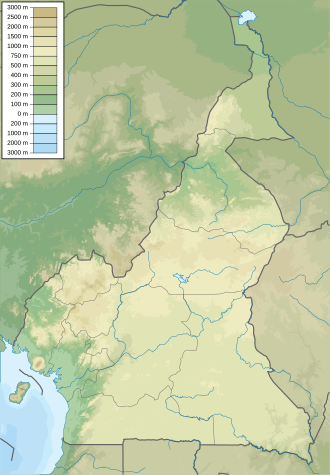| Lake Ejagham | |
|---|---|
| Coordinates | 5°45′N8°59′E / 5.750°N 8.983°E |
| Type | Solution basin |
| Primary outflows | Munaya River (part of the Cross River system) |
| Basin countries | Cameroon |
| Max. length | Approximately 1,050 metres (3,440 ft) [1] |
| Max. width | Approximately 700 metres (2,300 ft) [1] |
| Surface area | 0.49 square kilometres (0.19 sq mi) [2] |
| Max. depth | Approximately 18 metres (59 ft) [1] |
Lake Ejagham is a small lake near Eyumodjock in the Southwest Region of Cameroon. Unlike many other lakes in the region, it is not a volcanic lake, but is likely a solution basin formed by groundwater during the last Ice Age. [1] This highly isolated lake is roughly oval in shape, lacks an inflow, but has an outflow into the Munaya River (part of the Cross River system). [1] [3] The outflow is impassable to most fishes because of a waterfall. [1]

